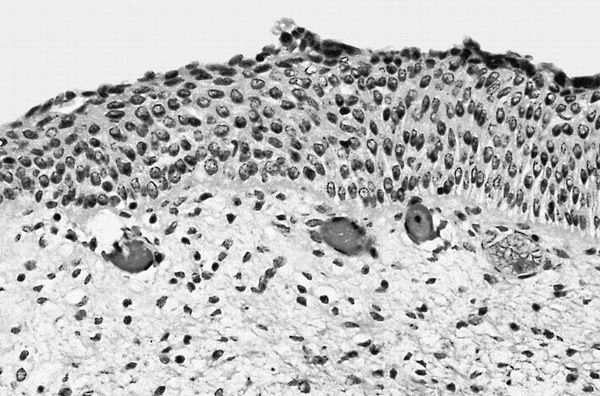Medical expert of the article
New publications
Cervical cycle
Last reviewed: 04.07.2025

All iLive content is medically reviewed or fact checked to ensure as much factual accuracy as possible.
We have strict sourcing guidelines and only link to reputable media sites, academic research institutions and, whenever possible, medically peer reviewed studies. Note that the numbers in parentheses ([1], [2], etc.) are clickable links to these studies.
If you feel that any of our content is inaccurate, out-of-date, or otherwise questionable, please select it and press Ctrl + Enter.
Cervix by days of the cycle
To begin with, let us recall that the menstrual cycle – as a regular monthly process of preparing the female reproductive system for possible fertilization and conception – consists of the ovarian cycle (including the follicular, ovulatory and luteal phases) and the uterine cycle, which also has three stages – menstrual, proliferative and secretory. At the same time, the cervix in different cycles behaves in full accordance with its functions (drainage and barrier). By the way, the ovaries and the uterus also have different functions, but everything is controlled by steroid hormones, and both cycles are synchronous.
Thus, the cervical cycle from a physiological point of view is expressed in cyclic changes in its tone, position in the vagina, condition of the squamous epithelium, diameter of the external os, acidity level, intensity of production of cervical mucus by the nabothian glands and its consistency.
Before menstruation, the cervix is elastic, the external os is closed, cervical mucus is thick and sticky, but there is little of it; the pH level of the mucus is below 6.5. While menstruation is in progress, the tone of the cervix is reduced, the external os is slightly open (ensuring the exit of the rejected functional layer of the uterine endometrium), the volume of mucus is average, the pH is within 6.9-7. In addition, there is a partial exfoliation of dead cells of the superficial layer of the squamous epithelium, which covers the cervix from the outside.
The cervix in the second phase of the cycle (at the beginning of the postmenstrual restoration of the uterine endometrium and the follicular phase of the ovaries) also begins to prepare for the next release of the egg, which is expressed in a slight thickening of the endocervix; accumulation of glycogen by the cells of the mucous membrane; a gradual increase in the production of cervical secretions (the mucus is still quite thick and viscous), and an increase in pH to 7.3.

Usually ovulation occurs 14 days before the start of the next period, that is, in the middle of the cycle. And the cervix in the middle of the cycle, due to the increase in estrogen levels during the fertile phase, becomes softer, its external os opens as much as possible, the cervical canal becomes wider, and the volume of mucous secretion produced increases sharply. At the same time, the mucus is very liquefied and becomes watery (which facilitates the passage of sperm), its acidity level also shifts sharply to the alkaline side - to pH 7.6-8, which creates the most favorable conditions for conception.
It is characteristic that the position of the cervix on the days of the cycle changes only in the ovulation phase, becoming higher in relation to the entrance to the vagina. In other phases of the cycle (including during menstruation), the position of the vaginal part of the cervix is low.
At the end of the cycle, after ovulation, the cervix, under the influence of progesterone, again becomes calm and moves downwards, the cervical canal narrows, the os closes, the mucus becomes more acidic and thicker and forms a plug (until the next menstruation).
Cervix by days of the cycle during pregnancy
The menstrual cycle during pregnancy is known to be interrupted, so the cervical cycle is also absent during this period. But this does not mean that no changes occur.
First of all, thick cervical mucus completely blocks access to the cavity of the pregnant uterus, and the external os closes tightly. Until the 6th week of pregnancy, the enlarged body of the uterus softens, and the cervix remains dense and located high. But then it also becomes softer and a little longer.
In addition, under the influence of a complex of sex hormones, starting from about the 15th week of gestation, the structure of the connective tissue (stroma) of the cervix begins to change: its cells retain more water, and the level of protective cells (in particular, mast cells and leukocytes) increases in the intercellular matrix of the mucous membrane.
Due to increased vascularization, the blood supply to the tissues increases, which is why the color of the mucous membrane of the cervix becomes bluish-violet. And closer to childbirth, the composition of the collagen fibers of the stroma begins to change, which will ensure the stretching of the cervix during the passage of the child through the birth canal.
For those who want to clarify on which day of the cycle a biopsy can be done, we inform you: in clinical gynecology, this diagnostic procedure is performed from the fifth to the eighth day after the end of menstruation, that is, in the proliferative phase of the uterine cycle and the follicular phase of the ovarian cycle.


 [
[